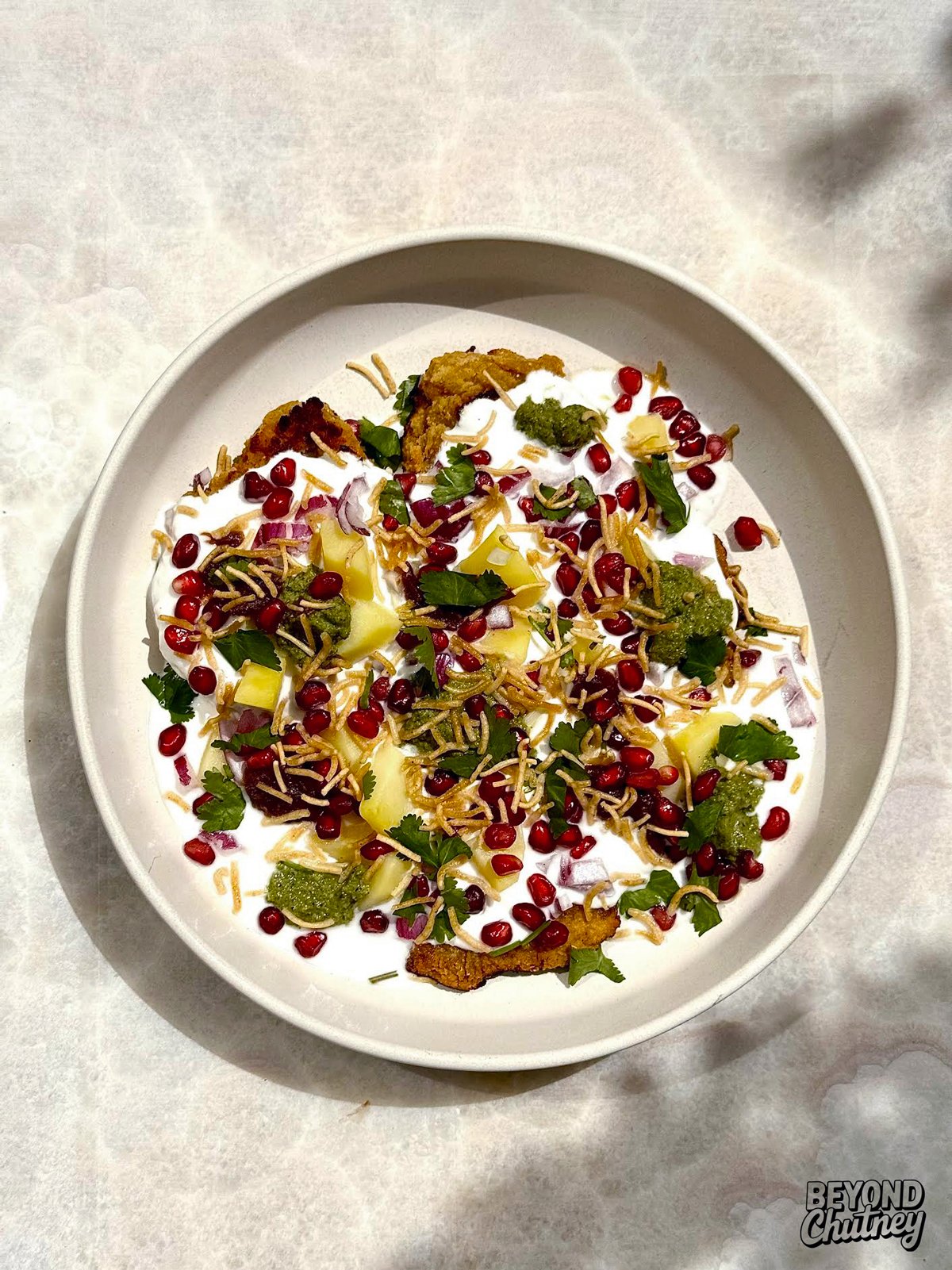
If Indian street food had a spokesperson, it would probably be Papdi Chaat — loud, colorful, and completely irresistible. One bite and you’ve got cool yogurt, fiery chutneys like my Date Tamarind chutney and Coriander Chili chutney, starchy potatoes, crunchy papdi, and a sprinkle of chaat masala all competing (happily) on your tongue.
You’ll find this dish wherever people in India reach for a quick, satisfying bite — from food stands to family kitchens, especially in Delhi and Uttar Pradesh. Street vendors have been perfecting their versions for generations, each with their own secret touch. Recipes are rarely written down; they’re passed along like family secrets, with each stall adding its own signature twist. And yet, you’ll also find Papdi Chaat reimagined in upscale restaurants and even on tasting menus at Michelin-starred spots — proof that this humble snack has earned a place everywhere, from North to South India.
The word chaat comes from the Hindi verb chaatna, meaning "to lick" — which is fitting, because this is the kind of dish that encourages you to savor every drop. It's believed that chaat was born in the royal kitchens of Mughal India, a Muslim empire that ruled much of the Indian subcontinent for centuries and left behind a rich culinary legacy, originally created as a digestive snack.
Spices like cumin and black salt weren’t just about flavor — they were meant to kindle the appetite and aid digestion, which explains why you somehow always have room for “just one more bite.”
Papdi — the crisp little wafers that form the crunchy base — are typically made from wheat flour and deep-fried until golden. In this version, I use chickpea flour instead of wheat — a naturally gluten-free alternative that’s not only more wholesome, but also widely used in Indian kitchens. It adds a slightly nutty flavor and keeps the crunch just right.
This version keeps the heart of the dish intact, with homemade papdi (totally worth it) and all the sweet, spicy, tangy toppings that make Papdi Chaat the rockstar of Indian street food.
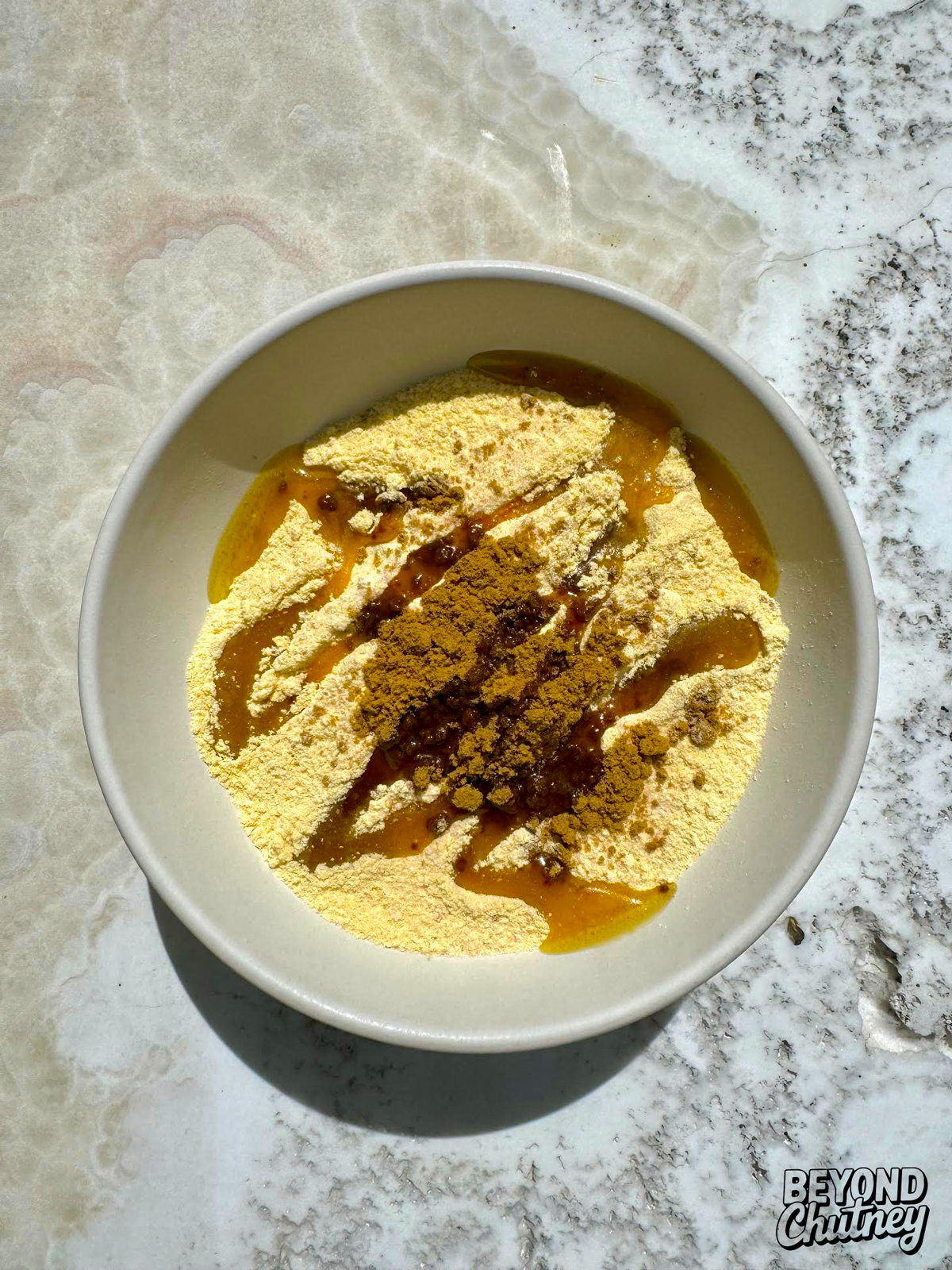
Papdi (crispy cracker)
Ingredients
- For the Papdi crispy crackers:
- 140 g chickpea flour besan
- 1½ teaspoon ground cumin
- ¼ teaspoon salt
- 1½ teaspoon oil
- 5-6 tablespoons water adjust as needed
- Ghee or sunflower oil for frying
Instructions
- In a bowl, mix chickpea flour, cumin and salt.
- Add oil and water and knead into a smooth, firm dough. Add more water if it's too dry.
- Let the dough rest for 15 minutes.
- Divide into two parts, roll out thinly, and cut into small circles (about 5 cm).
- Fry the discs in medium-hot ghee or oil until golden and crisp.
- Let them drain and cool completely. Store in an airtight container.
Notes
- Flour texture matters: Use fine chickpea flour (besan), not coarse. Sift if it looks clumpy for a smoother dough and crispier texture.
- Dough consistency: The dough should feel firm and slightly stiff—not sticky. Add water gradually to avoid it becoming too soft.
- Rolling tip: Roll the dough as thin as you can without tearing. Thinner discs make crisper papdi, while thicker ones may puff slightly.
- Cutting shape: Use a cookie cutter, bottle cap, or small round lid to make uniform circles (around 5 cm works well).
- Frying temperature: Fry on medium heat. If the oil is too hot, the papdi will brown too quickly without becoming crisp. Too low, and they’ll absorb oil.
- Cooling tip: Let them cool completely on a wire rack or paper towel before storing to keep them crunchy.
- Storage: Store in an airtight container at room temperature. They stay crisp for up to 2 weeks if kept dry.
Nutrition
Coriander Chili Chutney
Equipment
- 1 Blender
Ingredients
- Ingredients:
- 1 bunch fresh coriander leaves washed and drained (about 1 cup loosely packed)
- 1½ to 2 tablespoons chickpea flour or substitute with roasted peanuts, chickpea flour, or grated coconut
- 1-4 green chilis depending on heat preference
- 1 teaspoon roasted cumin seeds or ¾ teaspoon roasted cumin powder
- ¼ teaspoon salt adjust to taste
- 1 to 1½ tablespoons lemon juice to taste
- 2 small garlic cloves optional
Instructions
- Add all the ingredients to a blender.
- Pour in 1 to 3 tablespoons of water, depending on how thick or runny you want the chutney.
- Blend until smooth and creamy.
- Taste and adjust with more lemon juice or salt if needed.
- Store in an airtight container in the fridge.
- Best used within 2 to 3 days.
Notes
- The chutney tastes brightest when it’s freshly made. It keeps for 2 to 3 days in the fridge, but the color may darken slightly over time — that’s normal.
- If your coriander stems are thin and fresh, include them — they add flavor and help the chutney blend more easily.
- The chickpea flour adds body and a mild, nutty flavor to the chutney. Traditionally, roasted chana dal is used, but other common substitutes include roasted peanuts or even a spoonful of grated coconut — all depending on what’s in your kitchen.
- For a smoother texture, blend longer and add water slowly — too much at once can make the chutney thin and dull in flavor.
- You can skip the garlic if you’re serving it with yogurt-based dishes or just want a cleaner, brighter flavor.
Nutrition
Date-Tamarind Chutney (Sweet and Spicy)
Equipment
- 1 Blender
Ingredients
- ½ cup tamarind about 50 g, deseeded
- ¾ cup dates about 150 g, pitted — use soft, sweet ones like Medjool if possible
- ½ to 1 teaspoon red chili powder adjust to taste
- 2 cups water
Instructions
- Add tamarind, dates, chili powder and water to a saucepan.
- Bring to a boil, then simmer on medium heat for 10–15 minutes, until everything softens.
- Let it cool slightly, then blend into a smooth paste.
- Strain through a fine sieve if you want a smoother texture.
- Store in an airtight container in the fridge. Keeps for about 1 week.
Notes
- For a smoother texture, especially if using fibrous tamarind, always blend and strain.
- This chutney is perfect with chaats, samosas, pakoras, or even drizzled over rice or grain bowls.
- You can freeze leftovers in small jars or ice cube trays and thaw as needed.
- Roasted cumin powder (½ to 1 tsp) works very well in this chutney — it adds warmth and a deep, earthy flavor. Stir it in after blending.
Nutrition
How to Assemble the Papdi Chaat
Now that you’ve got the crispy Papdi, the spicy Coriander Chili Chutney, and the tangy Tamarind Date Chutney ready, here’s how to bring it all together into one flavorful, crunchy, creamy chaat:
Ingredients for Assembling:
-
300 g plain yogurt
-
2 tablespoon water
-
½ teaspoon salt
-
2 medium potatoes, boiled and diced
-
1 small red onion, finely chopped
-
1 teaspoon chaat masala
-
6 teaspoon tamarind chutney
-
6 teaspoon coriander chutney
-
A handful of sev (crunchy chickpea noodles)
To Assemble:
-
Whisk the yogurt with water and salt until smooth.
-
Arrange the papdis on a serving plate.
-
Top each one with diced potatoes and chopped onion.
-
Spoon about 1 teaspoon of each chutney (tamarind + coriander) over each papdi.
-
Drizzle with the salted yogurt.
-
Sprinkle with chaat masala and finish with a generous handful of sev.
-
Serve immediately while the papdi is still crisp.
For extra freshness, garnish with a little chopped coriander or pomegranate seeds if you like. And don’t wait too long — Papdi Chaat is best when eaten right away!




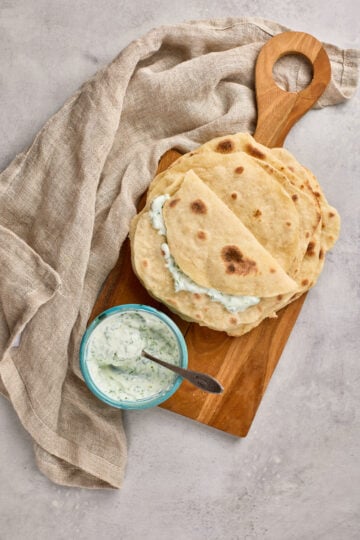
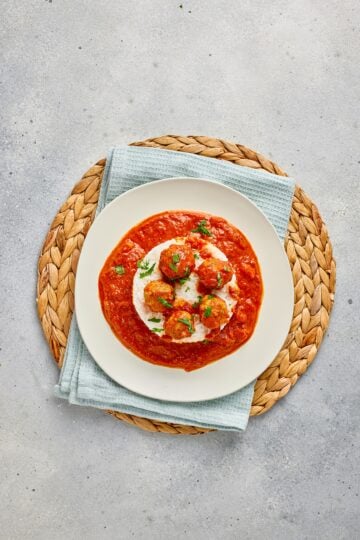
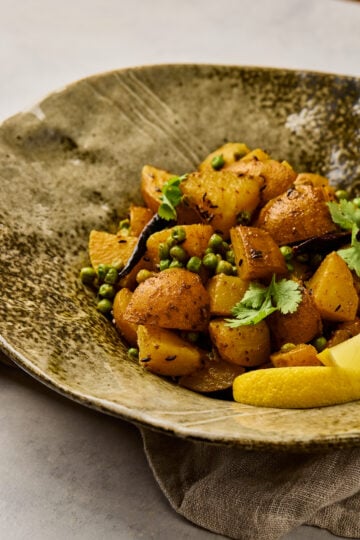
Have a question or something to share? Leave a comment below!